Normally about two weeks are required to rehabilitate an oiled sea otter; although the duration may be longer for animals with serious health problems. Rehabilitated otters should be moved from the regional rehabilitation center to seawater pens in a prerelease facility as soon as their fur is water repellent and they are healthy. Because of the many factors that may influence the timing of release (see Chapter 10), prerelease facilities may be needed to hold sea otters for up to six months. As part of prespill contingency planning, possible sites for prerelease facilities should be identified.
Holding pens in the prerelease facility should be large enough for the otters to swim and dive (at least 18 ft long, 10 ft wide, 5 ft deep) and have good seawater circulation. An octagonally shaped floating pen that can hold up to 200 sea otters was used during the EVOS. (Figures 12.2 and 12.3.) The spokes and perimeter of this pen are made of steel pipe (four foot diameter) that form flexible junctures when assembled. This type of construction allows the structure to bend and ride over waves. Each pie-shaped section is draped with netting (four inch stretch mesh) that is secured four feet above the water line. Floating, wooden platforms provide haul out space for the otters. A small hut in the center provides protection from the weather for the animal monitors.
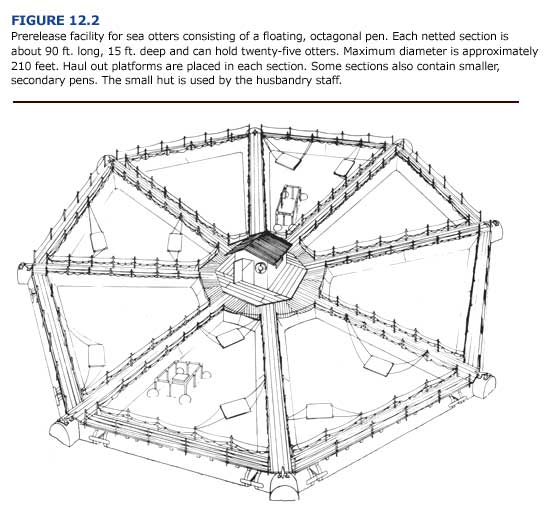
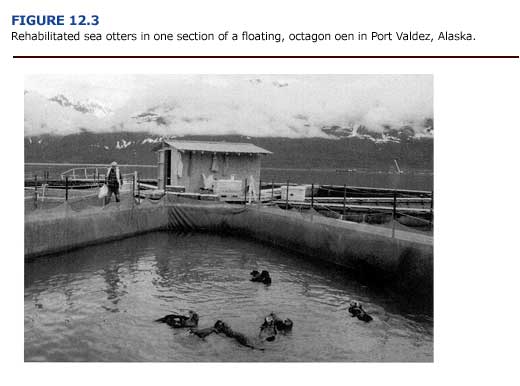
A less expensive prerelease facility with a 100 otter capacity can be made from a modular, floating dock ( JETFLOATTM ), Vancouver, B.C.) and twelve floating pens (Figures 12.4, 12.5, and 12.6). The pens (18 ft x 10 ft x 5 ft deep) are made out of aluminum pipe and net (2.0 inch stretch mesh on sides); the pens are secured to cleats on the floating dock. Each pen has a haul out platform (10 ft x 3 ft) made of smooth, plastic slats spaced one inch apart.
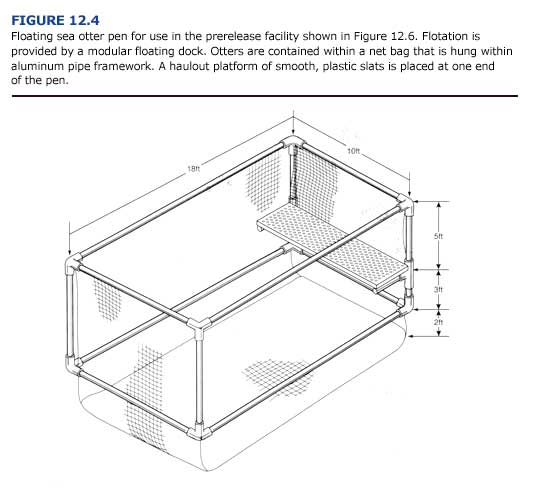
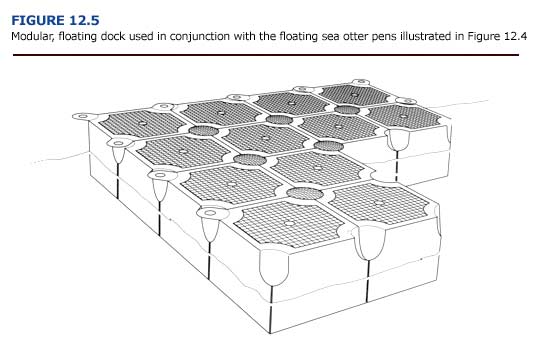
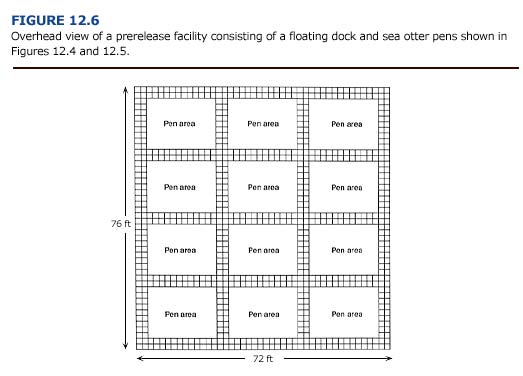
Other space requirements for the prerelease facility, but not necessarily located on the floating dock, include a food preparation area, freezers, a small veterinary clinic, administration and records, communications, an area for staff to change into sanitary clothing, and staff accommodations. Depending on the accessibility of the site by road, a helicopter pad and boat dock may be required on shore for the delivery of sea otters, staff, and provisions. Security is essential to prevent visitors and pets from entering the facility. As with the regional rehabilitation center, full quarantine procedures are maintained within the prerelease facility to prevent the introduction of domestic animal diseases.
If a large preemptive capture effort is planned after a spill (see Chapter 2), quick access to seawater pens in a prerelease facility is vital. Modular systems like the ones above will allow staff to quickly assemble the pens when needed. A modular design also enables the addition of new pens as needed, thereby allowing unlimited capacity.

